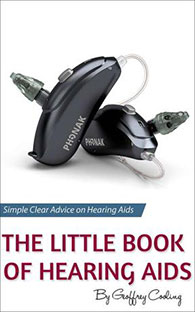Hearing aids aren't about getting old, they're the key to staying young!
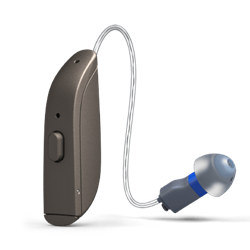
Enjoy stress-free listening with the new ReSound ONE hearing aid. Effortless hearing, stylish, discrete & packed full of features. We love this hearing aid.
Read Our ReviewHearing Aid Types
Everything that you need to know about the three different hearing aid types and their advantages and dis-advantages.
Modern Hearing Aid Models
You want to invest money in hearing devices, but you aren't sure which is the best style for you. Hey, we got your back, there is a vast range of hearing aids available, enough to make your head spin. However, all of them usually fall within just a few types or styles. Each hearing aid type has different strengths and weaknesses and differing suitability for different people. The question is which is the best for you? Let's explore the different types including the pros and cons of each one and hopefully, the info will make choosing a hearing aid type an easier decision. You can read about Bluetooth hearing aids and the products available here. You can also read about Rechargeable Hearing Aids Here. You can read about Bone Anchored Hearing Aids Here. You can listen to or download our podcast on hearing aid types below.
The Three Main Hearing Aid Styles
There are three main hearing aid types that everything else falls within, they are as follows:
- BTE Hearing Aids; These devices are worn with the hearing aid on top of and behind the ear. All of the parts are in the case at the back of the ear, and they are joined to the ear canal with a sound tube and a custom mould or tip.
- ITE Hearing Aids: These are custom-made devices, all of the electronics sit in a device that fits in your ear, they come in many sizes including CIC (completely in Canal) and IIC (Invisible in Canal).
- RIC RITE Hearing Aids: These devices are similar in concept to BTE hearing aids, with the exception that the receiver (the speaker) has been removed from the case that sits at the back of the ear. It is fitted in your ear canal or ear and connected to the case of the hearing aid with a thin wire.
Within those three overall categories there are the following hearing aid model types:
- IIC (Invisible In Canal)
- CIC (Completely In Canal)
- MIC (Mini In Canal)
- MIH (Microphone In Helix, only available from Resound and Beltone)
- ITE (In The Ear), could be half shell or full shell
- BTE (Behind The Ear, can be Mini, Standard or Power)
- RIC (Receiver In Canal)
- RITE (Receiver In The Ear, just another name for RIC)
Bluetooth Hearing Aids, Wireless Versus Non-Wireless Hearing Aids
Before we delve a little deeper into the different types of hearing aids it is important to discuss a new kind that has become commonly known to the general public as Bluetooth hearing aids, but to us in the profession as wireless hearing aids. All of the hearing device manufacturers have introduced wireless hearing aids over the last few years. In the recent past, they have even introduced wireless CIC hearing devices. Some have also introduced Made For iPhone hearing aids which we will discuss elsewhere. While some of them work with Bluetooth connections, they aren't precisely Bluetooth. However, just recently most of the hearing aid manufacturers have signed up to the single Bluetooth protocol, so a standardised method is coming.
Most of the manufacturers have designed their own flavour of wireless signal. Wireless communication between hearing aids and between hearing aids and other accessory devices has been a game-changer for people who wear hearing aids. Not just has it made it easier for people to enjoy their TV, phone calls and group situations, the wireless communication has also enabled jaw-dropping features in the hearing aids that deliver a much better experience for their users. As you can probably tell, I like wireless hearing aids. Some people choose discretion over wireless communications when choosing custom hearing aids. Honestly, and that is what this site is about, honesty, I think they are quite mad. Perhaps, certifiable. So in finishing, go wireless, and you will never go back.

We also have a Kindle e-book hearing aid buying advice guide detailing everything we know about hearing aids, their types, their technology and their pros and cons. You can buy the book on Amazon for Kindle. Click on the image of the book, and it will bring you to the book page, alternatively:
If You Find The Information on This Page Helpful, Please Rate The Page
Your Ratings allow us to understand if the info we provide is helpful
Rate this article
(Rated 4 stars by 320 people)





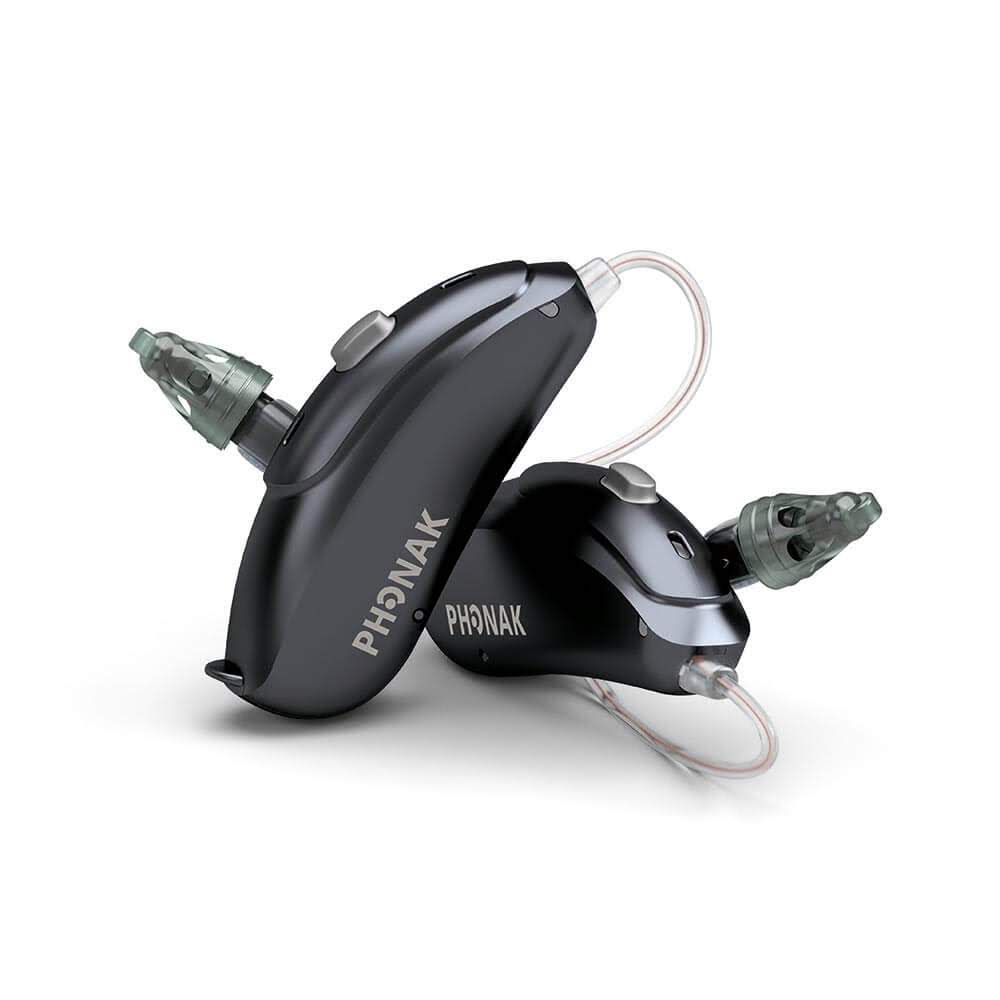
RIC / RITE Hearing Aids
Discreet Behind The Ear Devices
RIC (Receiver in Canal) / RITE (Receiver In The Ear) are recent additions to the hearing aid world.
To produce ever smaller Behind The Ear hearing aids, manufacturers moved the receiver (the speaker part) out of the body of the hearing aid and placed it at the end of a wire that went into the ear canal.
The devices have become hugely popular because they are massively versatile fitting many types of hearing losses and very discreet. In some cases, they are more discreet than in the ear hearing aids.
They do however have their pros and cons; you can take a more in-depth look at them below. Alternatively, you can read everything you need to know about RIC / RITE hearing aids here.
The Pros & Cons of RIC Hearing Aids
As with many things in life, there are pros and cons with RIC hearing aids, let's take a more in-depth look at them. First, let's take a look at the advantages of RIC devices.
The Advantages Of RIC Devices
Discreet
They are highly discreet devices, although the body of the hearing aid sits behind the ear they usually are tiny and unobtrusive. Unless someone is checking they invariably go un-noticed. The wire that leads from the body of the hearing aid into the ear canal is tiny and should sit along the crease of your face at the ear. Hence, it is almost un-noticeable as well. Because of these two facts, these are among the most discreet hearing aids available.
Easy Change Receivers
Because the receiver is interchangeable, these hearing aids can cover varied hearing losses from mild all the way through to severe to profound. It also means that if the receiver fails, which happens, it is easily changed out for a new one. This means that the hearing aid does not have to go away for repair for a receiver change, it can be done instantly in the office if the hearing professional has spare receivers.
The Disadvantages of RIC Devices
Receiver Issues in RICs/RITEs
The fact that the receiver is placed in the canal or the ear is both a blessing and curse. This placement exposes it to the hostile environment that the ear is for electronics. Your ear canal is wet warm and oily, all of the things that electronics tend not to like. The manufacturers take great pains to protect the receivers with nano coating materials, enclosed casings and wax guard protectors. However, unless you take good care of the receivers, changing your wax guards when you should, inevitably wax gets into them.
At best, this can block the sound outlet, at worst, it can ingress into the receiver itself and destroy it. Wax and moisture is the kiss of death for receivers. Thankfully, the receivers are quickly replaced by your hearing professional, however, after the manufacturer's warranty is up you may have to pay for them. While they vary in cost, they are not expensive; however, if you are replacing them regularly, the cost adds up.
I don't want to put you off this device types, they are exceptionally versatile, and I like them. If you are recommended this type of device be aware of the receiver issues. Many of the hearing healthcare professionals we partner with can arrange a five-year manufacturer's warranty to cover repairs. Some may charge, some may offer it for free. If you are considering buying RICs, ask about an extended manufacturers warranty.
Maybe Too Small!
As I said, RICs / RITEs are very small and discreet devices, usually the smaller they are, the smaller the battery they use. Both the size of the hearing aid and the size of the battery can cause difficulties for people with dexterity issues. The whole idea of acquiring hearing aids is so that you can wear them and enjoy the genuine benefits of hearing better. If you have difficulty handling them to put them in, what should be a joy can quickly turn into a frustrating task. The same has to be said about the batteries; small batteries can be a nightmare for people with vision or dexterity issues. Many of the hearing aid manufacturers offer RIC / RITE hearing aids in a variety of sizes and battery sizes, for instance, Phonak offer the Audeo V range in size 10 battery, a size 312 battery and a size 13 battery.
Contra-indications To Wearing RICs / RITEs
Some people shouldn't wear these type of devices. If you have permanent perforations in your ears or you have had a mastoid operation, these hearing devices aren't really for you. As you will know if you have these problems, there is an increased risk of middle ear infections and fluid release. Either will destroy the receivers of the hearing aids, because of the nature of your ears with these conditions receiver failures would be an ongoing problem rather than an occasional frustration. The same can be said for people who suffer from wet ears or produce a large amount of earwax; either condition will cause issues for the receivers. You can read about the best way to clean and maintain RIC hearing aids here.

Real Ear Measurements Are Essential For Hearing Aids
Gold Standard Fitting
Real Ear Measurements, REMs or Speech Mapping are imperative for best practice hearing aid fitting. It is our best advice to you, to find a hearing care provider who does offer them when you are purchasing. Ask any provider you deal with, do they offer probe tube measurements, if they say no, tell them you will go somewhere else.
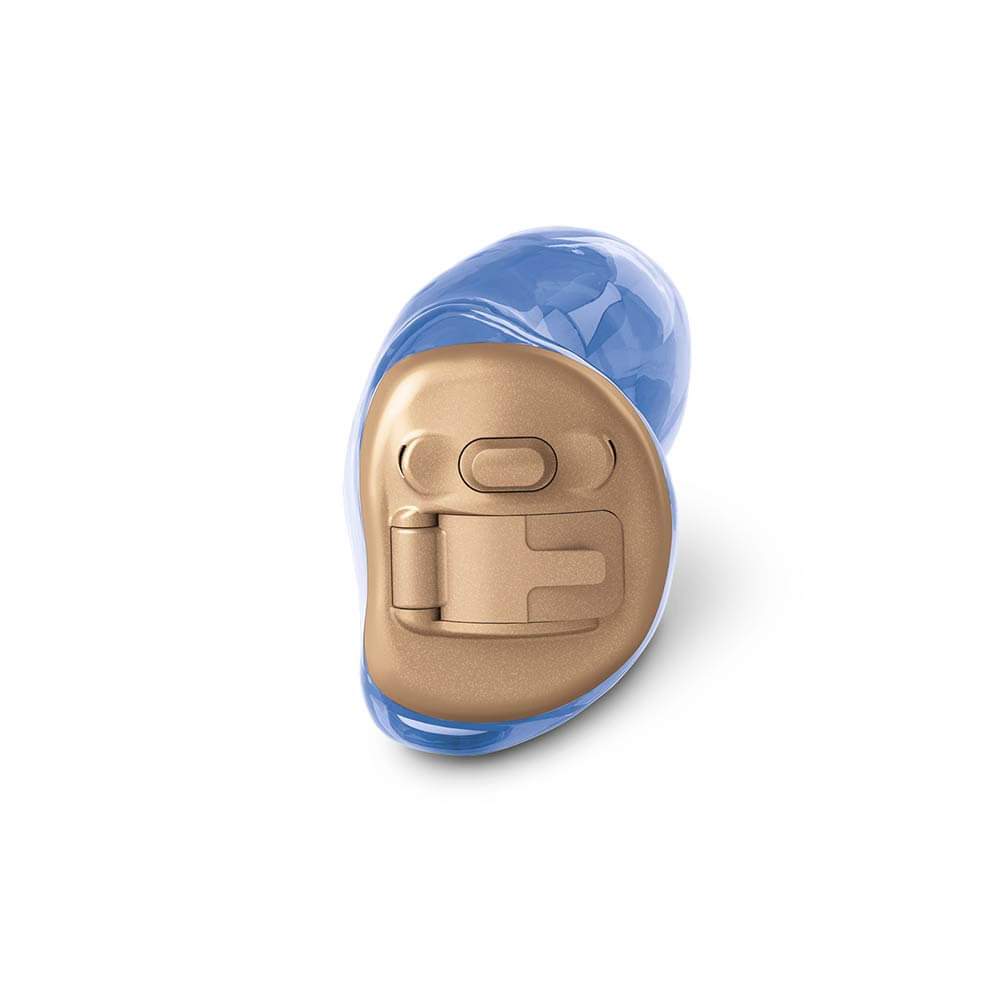
Custom or ITE Hearing Aids
ITE, CIC, IIC Hearing Aids
Custom hearing aids or in the ear hearing aids come in many shapes and sizes, from a quite visible Full Shell hearing aids to the so-called hidden hearing aids, the Invisible In Canal or IICs
Custom hearing aids have been around for a very long time, as I said they come in many shapes and sizes that deliver different levels of power and functionality. They were hugely popular devices but when RIC / RITE devices were introduced their popularity waned somewhat.
With the introduction of the so-called "Invisible hearing aids" several years ago their popularity has been resurgent. You can read more about the Invisible hearing aids here. Hearing aid manufacturers are also overcoming some of the technical challenges that reduced the functionality of the tiny custom device types in the recent past.
This has made the devices a better choice for people who need more help in tougher environments but want a very discreet package. Many of the manufacturers now offer small completely in canal devices that are wireless enabled.
Custom Hearing Aid TYpes
Invisible Hearing Aids
So-called invisible hearing aids or hidden hearing aids have been with us for a while, however, initially, they actually weren't that hidden. That has changed though over the last five years. The manufacturers cracked the difficulties that precluded them from making really invisible hearing aids. Since then every manufacturer has introduced a genuinely invisible in the canal hearing aid range. They fit deeply in the ear canal and the faceplate cannot be seen easily. They are truly discreet hearing devices and they have been well received. There are of course disadvantages, up to now, the IIC hearing aids are too small to be wireless, however, that is changing with a couple of manufacturers like Oticon, Signia and Starkey introducing wireless versions.
For some this is an easy trade-off, they forgo wireless capability for the discretion, however, I believe there is a lot to be said for wireless capability. I think wireless accessories are outstanding solutions and used well they have changed the lives of hard of hearing people dramatically for the better. But hey, that's just me. Invisible hearing aids are not suitable for everyone for several reasons, some reasons I will discuss later when talking about the overall pros and cons of custom hearing aids. However, there is one that is particular to invisible hearing aids, canal size, and shape. If your canal is not the right shape or size, you are out of luck.
Completely In Canal Hearing Aids / Mini In Canal
Completely in canal or CIC hearing aids are pretty discreet devices that will go unnoticed except by the keenest eye. Up to recently, they were predominantly nonwireless, however, in just the recent past many manufacturers have released wireless enabled CICs. I think that this is a fantastic breakthrough. However, wireless enabled devices are slightly bigger than non-wireless CICs, so you need to consider that before you go ahead if complete discretion is your objective. What is hugely interesting is that some manufacturers have managed to fit directional microphones on CICs, this again is a recent breakthrough.
Directional microphones give real assistance in noisy environments. However, this is the first time they have been on CICs, so it will be interesting to see the effect they have. Early reports indicate that they deliver better speech clarity in a group and noisy situations. Again, though, directional mics make the CIC slightly more significant, I believe though that like wireless, the functionality is well worth the trade-off. Mini in canal hearing aids are all of the above except slightly larger, most mini in canals would come with wireless features and directional microphones.
Full Shell & Half Shell Hearing Aids
They are as they sound, larger custom hearing aids that sit in the concha or bowl of the ear. The half-shell fills half the concha, and the full shell fills the whole concha. The traditional benefit of these devices has been more features, more power and physical controls like a programme button and volume controls. In the recent past with the introduction of wireless capability and more powerful solutions at the CIC level, those benefits have all but become negated. However, these devices still have advantages; they usually have bigger battery sizes which allow them to work longer between changes and they are easier to handle for people with dexterity and vision problems.
The Pros & Cons of Custom Hearing Aids
Yes, you guessed it, there are most definitely advantages and disadvantages to custom hearing aids. Let's take a more in-depth look at what they are.
The Advantages Of Custom Hearing Devices
Discreet
The smaller devices are highly discreet, and the invisible hearing aids are in fact, invisible. The larger devices are of course not as discreet.
Easy To Handle
Because the devices are all in one unit, they can be easy to handle and to place in the ear especially the larger hearing aids.
The Disadvantages of Custom Hearing Devices?
Receiver Issues, Microphone Issues
Like RIC / RITE devices, the receiver is placed in the ear canal. However, it is better protected than the receivers in RICs. Again this placement exposes not just the receiver but all of the electronic components including the microphones to the hostile environment that the ear. The manufacturers take great pains to protect both the receivers and the microphones. However, unless you take good care of your hearing aids, changing your wax guards when you should and cleaning the microphones, you are looking at possible failures.
At best, wax or dirt can just block the sound outlet or microphone inlet, at worst, it can make its way into the components itself and destroy them. As we said wax and moisture is the kiss of death for electronics. The manufacturers have done a good job of protecting those sensitive components in most cases. It is very rare for anything other than the microphone or receiver to fail, chipset failures are that rare that they are remarked upon with surprise. In the case of custom hearing aids, if there is a failure they will have to be sent off for repair which can take a varying amount of time. If the failure is within warranty it will be repaired free of charge, if not, you will have to pay a fee. If you are having them repaired regularly, the cost adds up.
The key to success with these hearing aid types is an excellent clean and care routine that involves drying. The better you take care of these hearing aids, the better they will perform. Again, I don't want to put you off this device types, they are fantastic devices, and I like them. If you are recommended this type of device be aware of the inherent issues. As we said, many of the hearing healthcare professionals we partner with can arrange a five-year manufacturer's warranty to cover repairs. Some may charge, some may offer it for free. If you are considering buying custom hearing aids, ask about an extended manufacturers warranty.
Maybe Too Small!
Some of the custom hearing aids are tiny and discreet devices, as with RIC / RITE devices, the smaller the device, the smaller the battery they use. With the smaller custom devices, the size of the hearing aid and the size of the battery can cause difficulties for people with dexterity issues. If you have trouble handling the hearing aids or putting the batteries in, what should be a joy can quickly turn into a frustrating task. The larger custom devices are easier to handle and use larger batteries that are easier to manage.
Contra-indications To Wearing Custom Hearing Aids
As with RICs and RITE devices, there are some people who shouldn't wear these type of devices. It is pretty much the same as RICs if you have permanent perforations in your ears or you have had a mastoid operation these hearing devices aren't really for you. The same can be said for people who suffer from wet ears or produce a large amount of earwax, either condition will cause issues for the hearing aids.
Even though the power output has been increased greatly with these type of hearing aids, they still might not be suitable for your hearing loss. If they aren't, don't let vanity win, get a hearing aid that is suitable for your hearing loss. That will translate into better hearing which will help you lead a better life. You can read about the maintenance and care of ITE hearing aids here.
Find An Independent Hearing Aid Centre in Your Area
Arrange a consultation with a trusted Independent hearing healthcare professional in your area
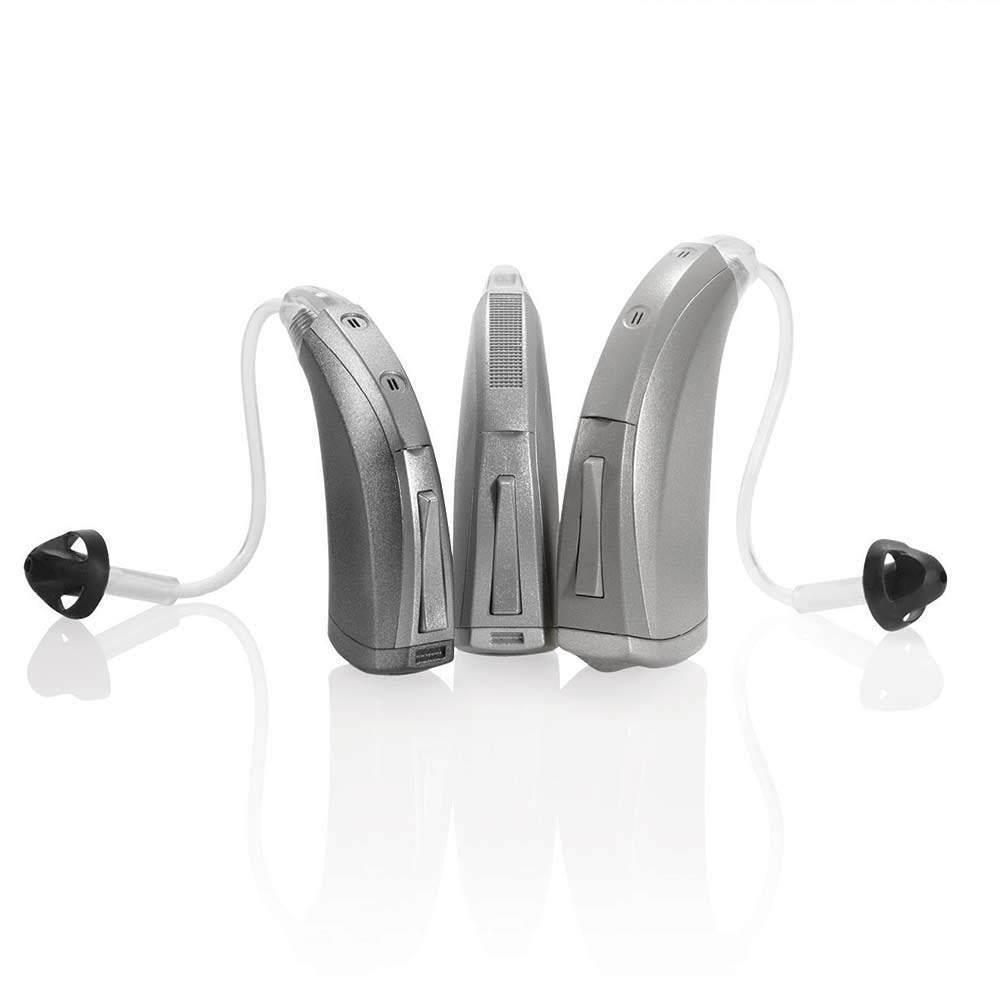
Behind The Ear Hearing Aids
BTE Hearing Aids
Behind The Ear or BTE hearing aids have been around for a very long time. In the recent past, they have got smaller, more versatile and more powerful.
Behind the ear hearing aids are self-contained units with all of the components in the case. Over recent years, they have gotten much smaller than they once were. They are hugely versatile devices and they will fit nearly every hearing loss.
Normally the manufacturers will make different styles for differing losses, one for most losses from mild to severe and one usually labelled a super power for profound hearing loss. Even the super power devices have become quite small in comparison to the older styles.
The hearing aid is connected to the ear through a coupling, in some cases, it is via a tube and ear mold, in the case of the hearing aids to the left it is with a thin tube and instant fit tip. The actual fittings are varied and usually based on hearing loss.
The Pros & Cons of BTE Hearing Aids
We are finding it hard to think of disadvantages really, but we will give it the old college try. Let's take a look at what you can expect from BTE devices.
The Advantages Of BTE Hearing Devices
Fully Functional Hearing Solutions
BTE hearing aids nearly always have a full load of hardware including volume controls, programme buttons, and telecoils. The telecoil is a useful addition if you want access to loop systems in public buildings like churches, conference centres, the post office. Many taxis in London are fitted with loop systems. Even though wireless communication systems in hearing aids is now the norm, the telecoil is still a good thing to have. The only issues that occur with telecoils is usually a problem caused by the fitting of the loop system.
Extremely Reliable Hearing Aids
BTE hearing aids are probably the most reliable of hearing aids, they very seldom fail. Because all of the components are encased in the hearing aid and the hearing aid is worn at the back of the ear, very little or no wax or moisture can get at them. When something goes wrong with a BTE, it tends to be either the physical controls or the microphones. Nearly all of the manufacturers have introduced new types of microphone covers that almost completely enclose the microphones. So even microphone failure may be a thing of the past.
Easy To Use
BTE hearing aids tend to be easy to handle and place in the ear, so for people with dexterity or vision issues; they are a good choice.
The Disadvantages of BTE Hearing Devices
Haven't a Clue
We are wracking our brains here and really can't think of anything, maybe discretion? Even that isn't true, a small BTE with a thin tube is a very discreet hearing aid to wear. It would be almost as discreet as many of the RIC / RITE devices. Okay, the larger BTEs are not the most discreet, but I would always go for long-term reliability every time. A hearing aid is of no use to you if it is broke and BTEs very rarely break.
Contra-indications To Wearing BTEs
Sorry, again we are stuck for any here. Read about BTE care and maintenance here. You can also read more about BTE hearing aids and the models available from the big brands here.
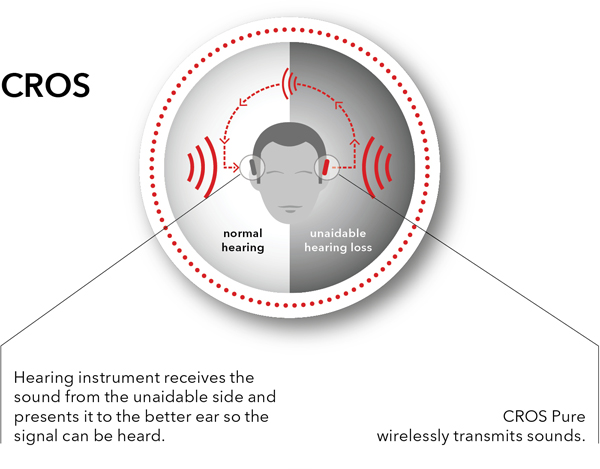
CROS Hearing Aids
CROS and Bi-CROS Hearing Aids
Single-sided deafness (SSD) causes real problems for people who suffer from it, even if the better ear has excellent hearing. CROS (Contralateral Routing Of Signal) systems were designed so that people with SSD could have access to sound from their bad side. The devices came into their own with the introduction of wireless audio streaming which meant they no longer needed to be physically connected.
What is a CROS System?
A Contralateral Routing Of Signals (CROS) hearing aid is a type of hearing device that is used to treat unilateral hearing loss (single sided hearing loss). It takes sound from the ear with weaker or no hearing and transmits the sounds to the ear with better hearing. In point of fact, the CROS device usually is not a full hearing aid.
It has microphones and an amplifier chip but no speaker, instead it transmits the sound wirelessly to a receiving hearing aid on the better ear. It may seem strange to wear a hearing aid on your good ear. However, all it is doing is delivering the sound from your bad ear. It isn't amplifying any sound as such.
This type of set-up allows you to have access to sound from both sides of your head which makes a tremendous amount of difference. God gave you two ears for a reason, and it wasn't just to make you pretty. You can read more about CROS and Bi-CROS hearing aids and why they are used here
Looking For Hearing Aids or A Hearing Test?
Arrange a consultation with a trusted Independent hearing healthcare professional in your area

